Design for All Users: 3 Keys to Accessibility for Your Association’s Website
Your website is your association’s most powerful communication tool. Delivering a vital and engaging resource to current and prospective members is your top priority in a digital-first landscape. But you also have to ensure your website will connect with all of your visitors.
Diversity, Equity, Inclusion, and Accessibility (DEIA) initiatives aren’t just trending topics. They’re core priorities that enable your website to connect with audiences of all abilities. Whether you’re considering a new website for your association or a refresh of its current look, accessibility must be a key consideration in how it’s designed, built, and maintained.
If you aren’t factoring accessibility into your website priorities, you’re limiting the audience for your association’s message. Worse yet, you could be at risk of costly legal action if it falls short of compliance with current regulations. But more than avoiding potential consequences, having an accessible website is simply the right thing to do.
Why Accessibility Matters In Association Website Design
A website designed to accommodate accessibility simply ensures that users with disabilities have access to the same information as everyone else. In the same way, a building with stairs at its entrance prevents those with differing physical capabilities from entering, a poorly designed website restricts access for people with limited vision, hearing, or other impairments.
For example, screen readers allow users who are visually impaired to navigate a website, interact with it, and consume the information. Design, coding, and management best practices allow accessibility tools to work with a well-built website. If your agency partner doesn’t view accessibility as a core priority in their website designs, your association will turn away users reliant on these tools.
Plus, an inaccessible website violates the ADA/Americans with Disabilities Act. Dating back to 1996, the government has ruled websites are subject to the same requirements as physical locations. If your website falls out of compliance with ADA standards, you’re a target for legal action that can lead to fines and a costly effort to update your website to accommodate all users.
3 Core Considerations in Evaluating Website Accessibility
Applying empathy toward the user is a fundamental trait of good website design. While the full breadth of digital accessibility standards may seem overwhelming to consider, the right website design agency will focus on key areas of accessibility to ensure your association is compliant. Here are three top areas to consider:

1. Design Principles and Best Practices
Website users who are visually impaired depend on screen readers to find what they need. To accommodate screen readers, the information on every page should be arranged in a clear hierarchy. Using things like heading tags, ordered and unordered lists, and tables appropriately enables these tools to help the users intuitively navigate the website and find what they’re looking for.
Along with accommodating the visually impaired, website designs should take into account users with limited vision or other visual sensitivities. The right agency partner will factor in the following design elements as they create a website for your association:
- Color: Ensure sufficient contrast between text and background colors to improve readability for all audiences. The color of each element should also not be the sole consideration for delivering information. Your designers should incorporate additional visual cues as well as text to accommodate users with visual impairments.
- Motion Graphics and Video: Some users find animations, flashing graphics, and other content with motion effects disorienting. If your videos are set to play automatically, users should have control over pausing or stopping them.

2. Development Standards
You and your marketing team won’t be writing the code for a new website design—that’s why you have an agency partner. However, the technical elements of your website’s design are crucial to enabling accessibility features and maintaining ADA compliance.
You should ensure your design incorporates accessibility best practices. This checklist provides an easy-to-digest rundown of coding and content standards that will protect website compliance. One easy way to check surface-level accessibility is to verify that you can navigate the website using a keyboard alone. But don’t stop there; make sure you find a partner with experience meeting WCAG2 compliance requirements.
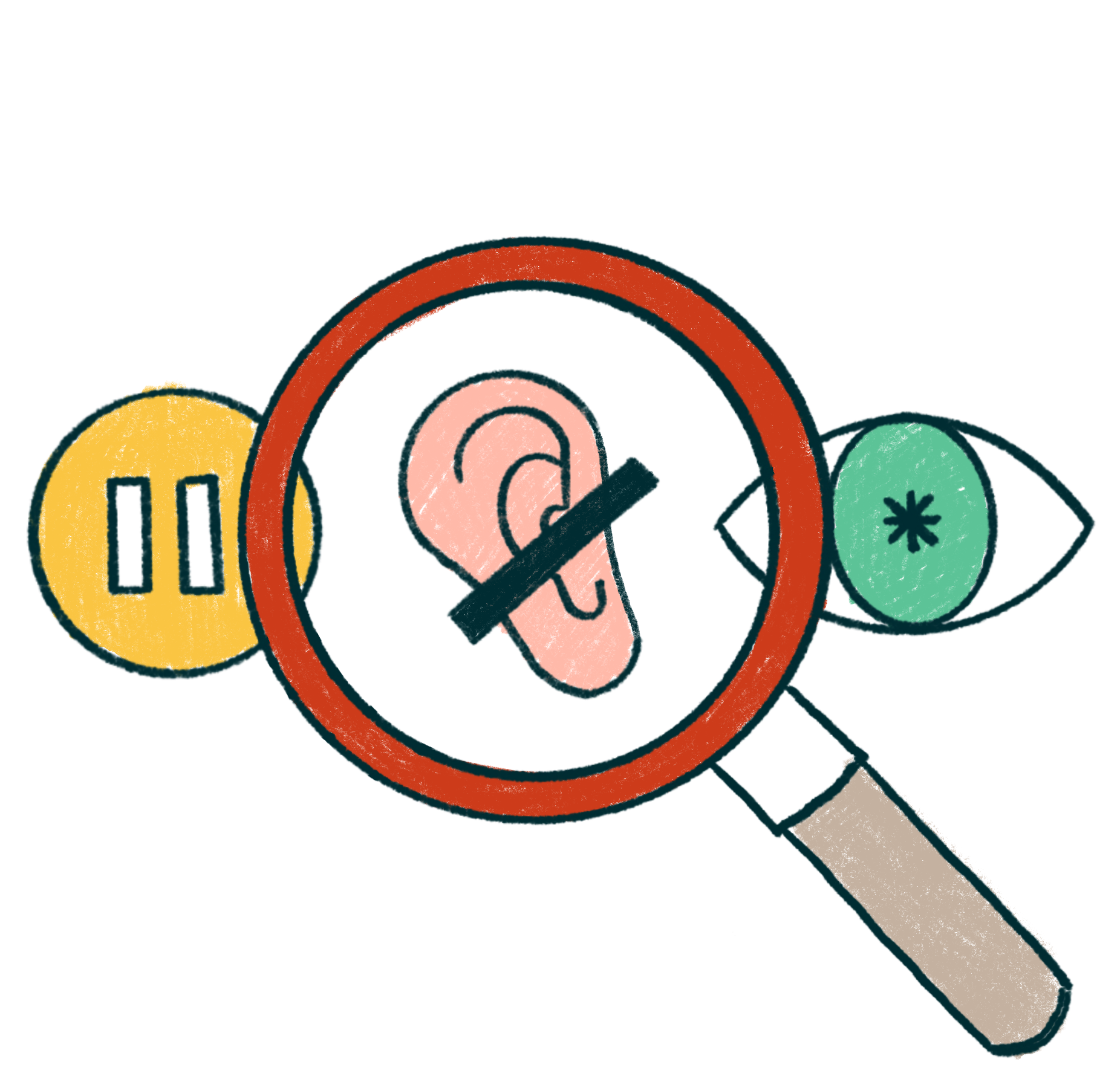
3. Website Maintenance Principles and Best Practices
Choosing a design agency that prioritizes accessibility is the first step to securing a website that complies with current standards. However, accessibility is not a one-and-done responsibility. It’s an ongoing area of focus for you and your team.
As you update your website with landing pages and other content, you have to be vigilant about ensuring your website remains accessible. A few guidelines for content creation include:
- Adding alt tags to images and captions to videos that are not simply for decoration ensures they are understood by people using screen readers.
- Use headings (H1, H2, H3, etc.) to help the user understand how the page’s content is organized and the order in which to consume it. Heading tags should introduce all content.
- Providing a unique title for each page.
- Ensuring each button and its label element are unique and descriptive. This is especially important when your page includes multiple links with the same text (such as “read more” or “learn more”)
- Using appropriate tags (ordered list, i.e., numbers or unordered lists, i.e., bullets) for listed content to ensure a screen reader will accurately identify whether items in a series are ordered or unordered.
Your Association Can’t Afford to Ignore Accessibility
By law, every organization providing information to the public must deliver an accessible experience for every user. Whether you are new to accessibility or have been thinking about it for a while, it needs to be part of your next website project budget and scope.
Designing, developing, and testing an accessible website does take more time and effort. But in the end, it’s not a dramatic increase in either, and it is far easier to design an accessible website from the beginning than to remediate it to comply with ADA standards later on.
If this sounds like an approach that will benefit how your association reaches its audience, we should talk.
4 Warning Signs That Your Brand Has Grown Disconnected from Your Association
Marketing directors at associations have a variety of goals, but two areas constantly demand focus. One, to ensure your organization consistently retains and engages its current generation of members. And two, to grow your organization’s membership. To be successful, you have to clearly illustrate the value of your association to the generation of members still to come.
When your work falls short of these goals, your association faces an existential crisis. But before you examine every marketing initiative to find out what went wrong, consider zooming out and evaluating the state of your organization’s brand.
A good brand system is more than a logo and a set of colors. It’s a toolbox providing the resources necessary to communicate your organization’s purpose in a way that resonates with the right audience. As you look to keep your marketing efforts on track, you must ensure you’re addressing the right problem.

Why a Strong Brand Is Crucial for Member-Driven Associations
An underdeveloped or outdated brand isn’t the reason behind every marketing issue your organization may have. But if your brand is incomplete or out of alignment with your organization’s identity and/or audience, all your efforts will be a struggle.
A strong brand system defines the verbal and visual tools to communicate who you are, what you stand for, and why you exist. Fundamentally, your brand needs the support of a comprehensive system with all the resources to tell your organization’s story.
All communications and marketing should be in sync with your organization’s identity as well as the values of your audience. If your marketing projects are not resonating with members, or if your messaging is inconsistent, a disconnected brand may be the root of your problems.

Warning Signs Your Association Is Disconnected from Its Brand
The following four red flags offer a few signs that your organization needs to focus on its brand:
1. Members or Sponsors Switch to Inferior Competition
Regardless of your association’s audience, current and prospective members have options competing for their dollars and attention. Local, regional, and national alternatives may offer services comparable to your organization, as do more specific or broader professional associations. A healthy brand system gives you the tools to communicate your value effectively, connect with prospective members, and showcase what sets you apart.
When you start losing members or sponsors to other organizations, your brand system may be falling short of your needs. This is especially true if your members or sponsors are leaving for competitors that provide services that are comparable or even inferior to your offerings. Whether your organization offers member education, networking, advocacy, or other services, your brand system provides the building blocks to communicate these benefits effectively. Declining membership could indicate a communication breakdown between your association and its audience.
2. Staff & Stakeholders Explain Your Organization in Different Ways
When your messaging is poorly defined or articulated, your staff and board lack the proper tools to communicate what’s most important about your mission. You, your board, and your employees are all individuals, and how you discuss your association will be shaped by your experience. However, everyone should start from the same baseline when introducing the organization. You should all be able to deliver a cohesive elevator pitch that captures the key elements of your brand narrative.
Typically, a message needs to be repeated five to seven times to be remembered. By having everyone in your organization follow the same core messaging points, you build a consistent narrative that develops a cohesive identity with the audiences you need most.
A strong brand provides your teams with a messaging system that adds clarity and consistency to every expression of what your organization has to offer. It enables your organization to speak in a unified voice, building trust among membership, sponsors, and the public.
3. Marketing Projects Lag Without Adequate Brand Tools
If your brand guidelines include a logo, two fonts, and three colors, your organization lacks the tools to communicate in today’s multi-channel environment. You need a brand system that is robust enough to set your organization up for success regardless of the medium.
You’ll see one of two possible red flags when your organization lacks sufficient brand resources. If you’re steering a tight ship, your marketing projects may start to look boring, uninspired, and basic over time. Or even worse, your creative teams will scramble to reinvent the wheel with each project and start making up their brand components to fill the void. Instead of appearing unified with your communications, your brand becomes a mishmash of disconnected visuals across different channels. Projects will take longer to produce and lack the cohesion required to support your goals.
4. Events Outpace Your Organization for Sponsorship Dollars
Your organization’s events are critical opportunities to connect with current and prospective members. Sometimes, a marquee event takes on a life of its own, with a special look that stands apart from your association. In cases like these, sponsors may spend their money on your popular event while leaving out the wider organization.
Ensure every sub-brand connects with your larger association and adds to your brand story — not compete with it. The success of your events should always be attributable to your organization and remain strongly connected to its overall brand. With a well-planned and robust brand system, your organization has the capacity to build and support multiple complementary sub-brands that are clearly related in support of the same, singular mission.

Create a Cohesive Experience with Your Association’s Brand
Effective design, persuasive messaging, and a strong brand are crucial to associations looking to nurture a strong connection with their audience. Without these elements, your communications will get lost in the noise of a crowded landscape and fail to express the value of membership.
If your organization is struggling to connect with its audience, you should look beyond the surface to examine the state of your brand system. With an experienced partner, you can transform your brand into a powerful communication platform with verbal and visual language that expresses your identity.
If you think you’re noticing red flags and want an impartial third party to assess your brand’s positioning and ecosystem, consider an Impact Analysis. We will audit your brand and prescribe a plan of action, identifying opportunities for improvement and the resources needed to achieve your marketing goals.If this sounds like a resource that would benefit your association, get in touch with us.
Member-First Websites: Putting Users at the Heart of Your Website Redesign
For organizations considering a website redesign, functionality and technology are often among the top items on any wishlist. After all, your next generation of members are digital natives, and you need to secure the best tools to deliver the kind of standout experience that reflects the value of your organization. However, focusing primarily on the technical aspects of your website such as its CMS platform neglects the most important part of any redesign project: Your users. Naturally, a great CMS is essential — but it’s also no guarantee of delivering the kind of experience that connects with members and captures your brand’s story. As you consider your next steps in a redesign project, you need to ensure your website users are the first priority. In this eBook, you’ll learn:
- Why a good CMS is the baseline, a great user experience is what sets you apart
- How user-centered design benefits associations.
- Core elements of user experience.
- How to develop a member-focused website design.
Download ebook
6 Design and Content Best Practices to Improve Your Association’s Email Marketing
In an overcrowded media landscape, associations must build a strong connection with their members. But many of the marketing tools at your disposal have a barrier between you and your audience. Social media outreach requires time, talent, and financial investment to navigate complex algorithms. Advertising offers a potentially broad reach, but it requires considerable investment for the right exposure.
Of all the communication strategies available to you, email holds great potential because it is a direct line to your audience. In effect, members and those curious to hear more about your association have invited you in. But what does your association have to offer once you arrive?
Inboxes are competitive spaces with an array of voices vying for the audience’s attention. However, with a strategic approach to content and design, you can break through the noise and deliver a standout experience that nurtures your connection with members now and in the future.
Why Mastering Email Is Vital to Your Association’s Health
Email offers a wealth of opportunities for associations, but it can feel like walking a tightrope. Send too much clutter and your members will unsubscribe or, even worse, flag your messages as spam. Send irrelevant content, and your messages won’t be seen as useful and will become part of the noise.
You need to ensure that the content and design of the emails you send allow your audience to see the value of a direct connection with your association. Factor in the changing demographics of the workplace and the stakes grow even higher. A recent study showed 73% of millennials prefer communicating with brands through email than any other medium.
Email marketing presents a golden opportunity to nurture a connection with members. But it’s a two-way street. Your members signed up to receive messages from your organization because they want curated information from a trusted source to help them succeed.
To ensure you meet these expectations, we’ve assembled the following best practices:
1. Provide a Seamless Experience with Every Email
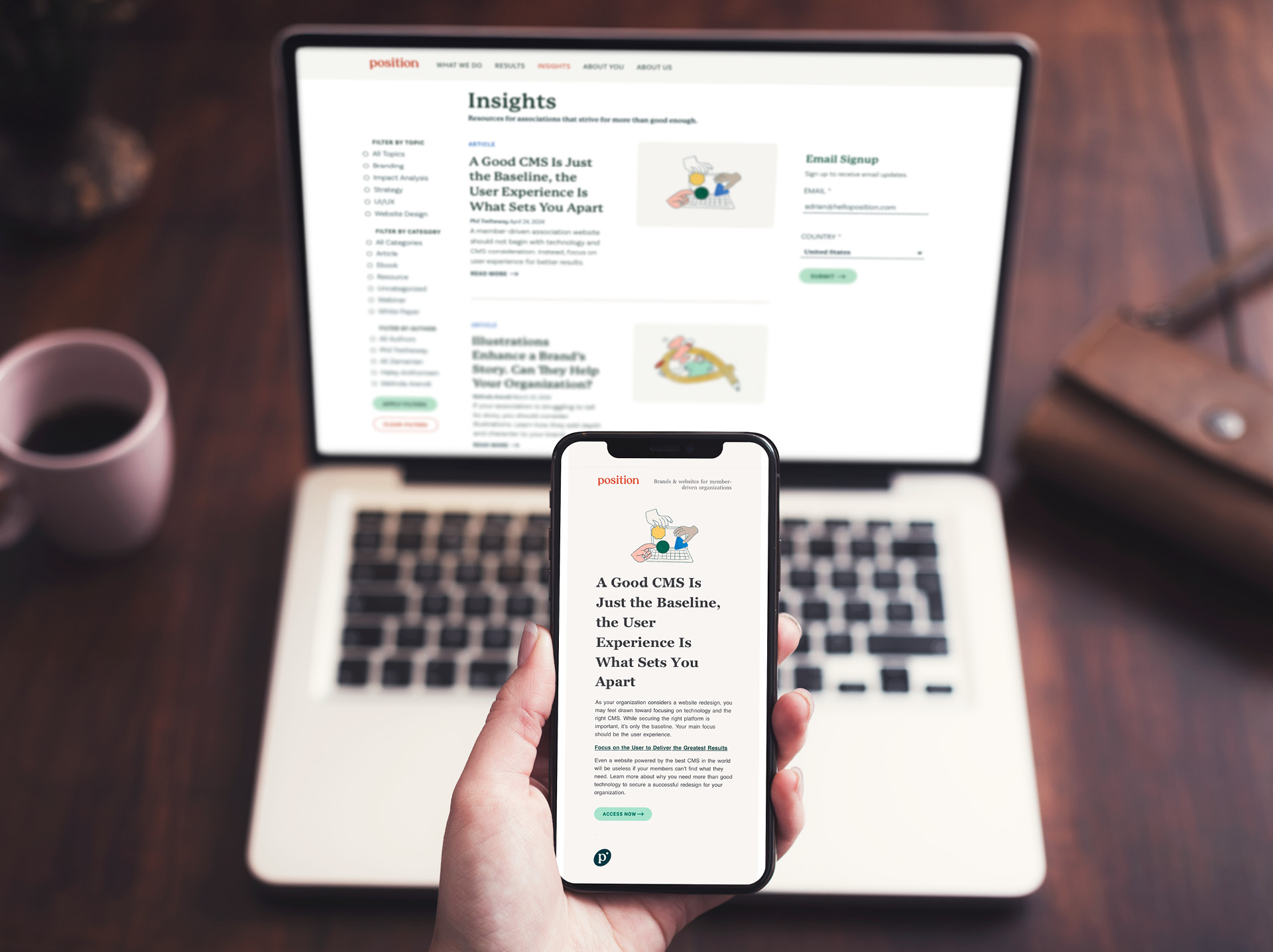
Much like your association’s website, every email should positively reflect and expand upon your brand story. The visual design should be consistent with your organization’s overall brand ecosystem. Your emails will include links that send readers to your website, and what they see on one should function as a fluid extension of the other. A consistent experience will enhance the perception of your brand and build a sense of trust among readers.
2. Understand Your Audience and Their Needs
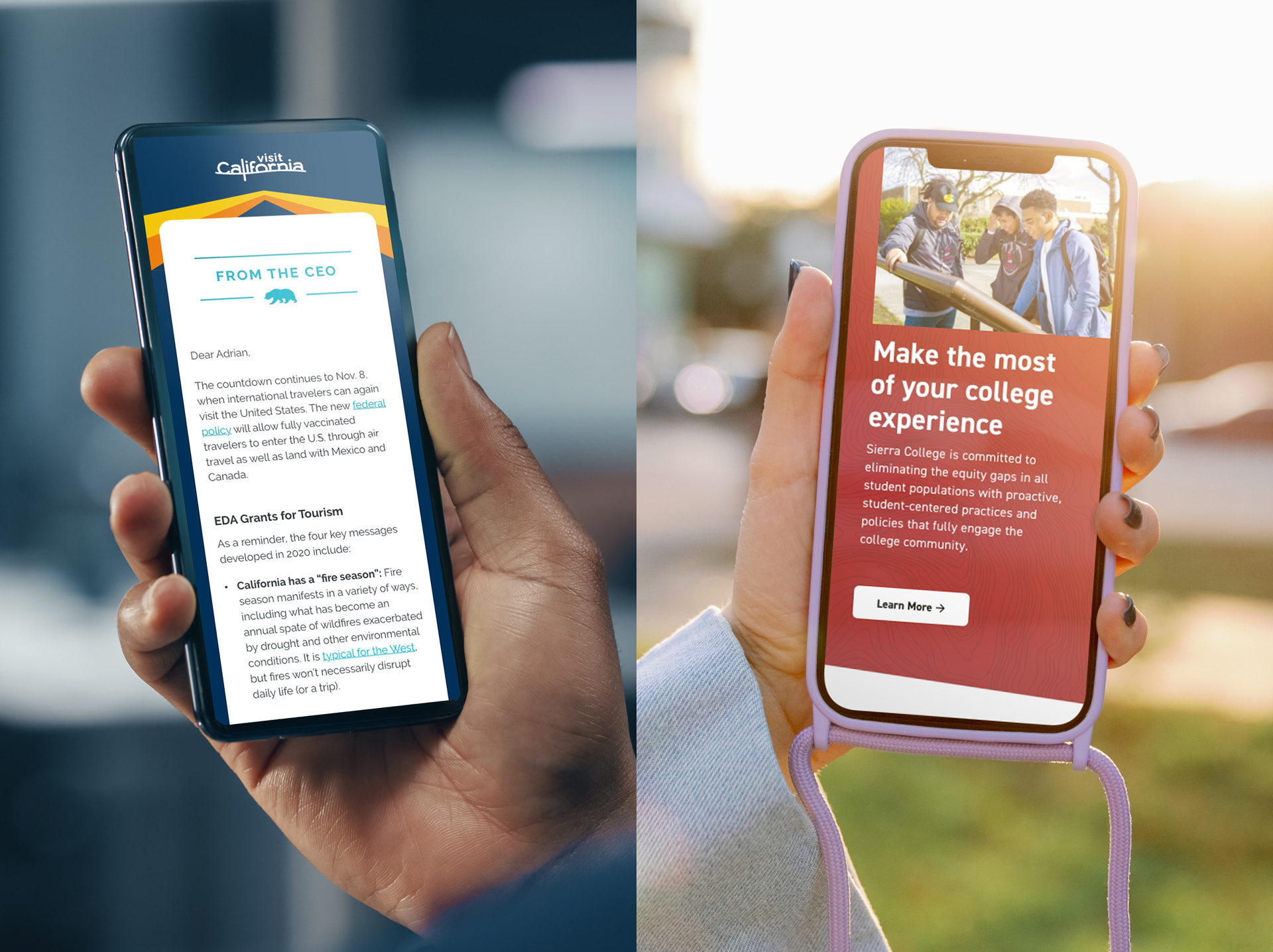
Your current and prospective members give you their time and attention when they read an email. You have a responsibility to deliver on that investment and make it worthwhile.
Your organization should survey its members about the content they want to receive and consult analytics to track user behavior. That way, you develop a sense of what your audience wants and respond appropriately. Applying personalization, such as using a member’s first name from your database, will help increase email engagement and ensure your members feel valued and seen.
You should also avoid trying to serve every audience with a single newsletter. Comprehensive newsletters quickly become irrelevant if their content doesn’t resonate, and they’re often too long. Instead, create multiple audience segments and deliver customized content for each to ensure subscribers only receive relevant content.
3. Optimize Your Association’s Content for Reality

Emails should be short, scannable, and mobile-friendly. More than 46% of all emails are first opened on mobile devices. You need to ensure your designs are responsive to these screen sizes and remain lightweight so they load quickly.
You should never include the full text of a message in a newsletter unless it’s a one-off announcement or update. Instead, give your content an engaging headline with a one- or two-sentence description, followed by a button guiding readers to read more. Along with providing a digestible amount of content, you also gain analytics data on what is resonating with your audience.
4. Leverage Effective Design
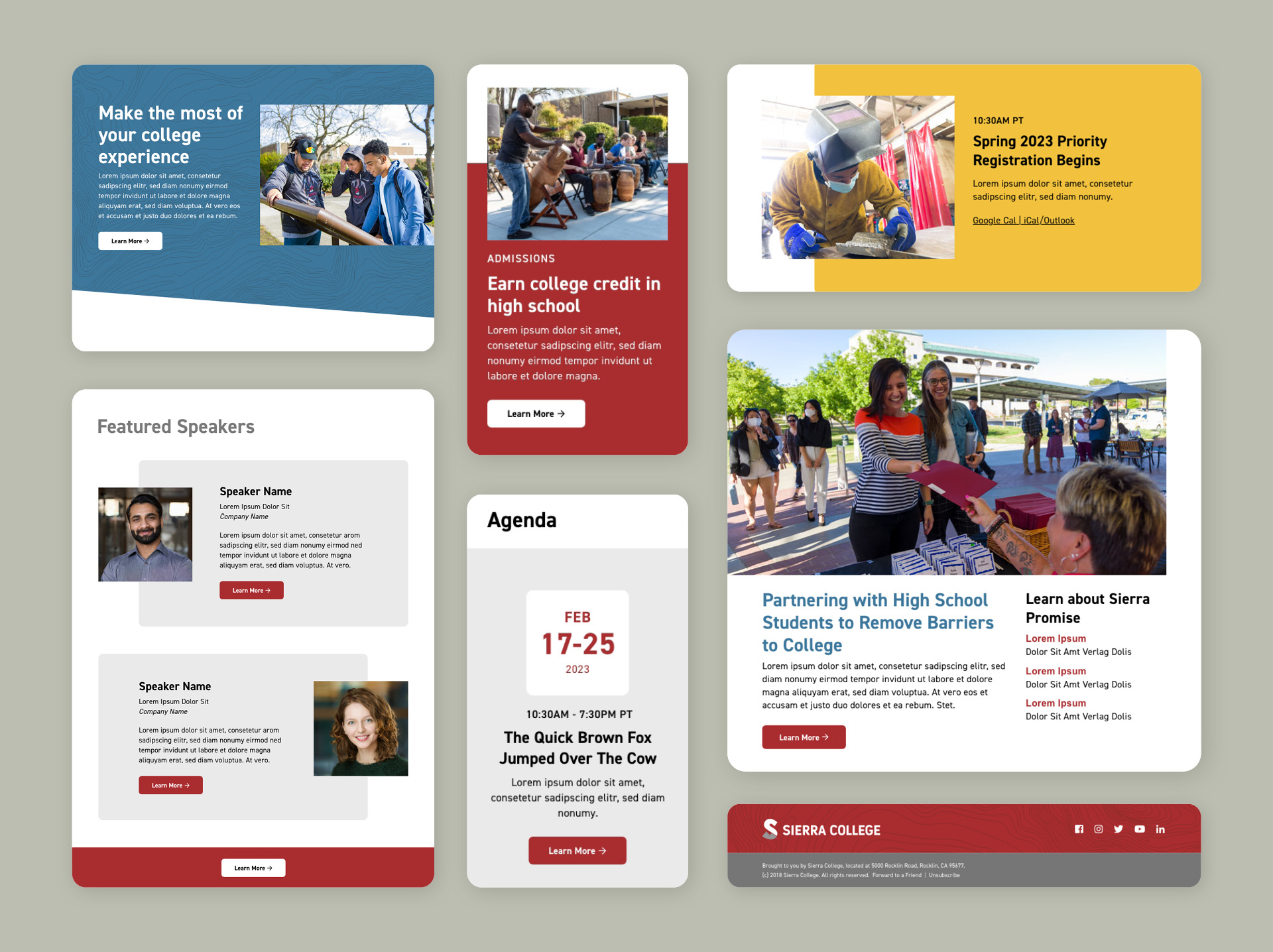
Email design isn’t a one-size-fits-all endeavor. Creating templates with multiple modules optimized for different content types, such as articles, event announcements, news, etc, helps your messages stand out.
Whatever type of email you send, the content must be useful and easy to read. Design practices such as retaining an appropriate amount of white space in each message will ensure your emails appear light, airy, and inviting.
5. Use Strong Visuals Appropriately
Images enhance the storytelling in your email and engage your readers. Infographics provide engaging opportunities to express information in a persuasive, scannable way. Animated GIFs will also catch your reader’s eye, but they should be used sparingly and primarily as header images, as they can be overwhelming.
However, your email should not be one large image. Services like Gmail will identify these messages as spam and block your visuals by default. You should avoid putting text in images when possible, as images are often turned off by default in many email programs. When you can’t avoid it, be sure to add alternative text to those images — this ensures you are compliant with accessibility guidelines, and your message will still be understood if they don’t load properly.
6. Send Useful, Actionable Messages That Meet Legal Standards
Email is a powerful tool, but that power is effectively a double-edged sword. Don’t send enough, and you’ll be forgotten. Send too many, and you’ll likely annoy and eventually lose the audience you need most.
Worse yet, your IP address may be blacklisted for not complying with CAN-SPAM requirements, which is difficult to resolve and could also lead to legal action. You should always make the unsubscribe link easy to find to avoid alienating your members and being marked by readers as SPAM.
Whether inviting members to a gala, encouraging a renewal, or sharing professional resources, you should never email your members without a clear and compelling purpose. Before sending an email, ask the following question: What’s in it for your members? If you apply this simple guideline to your email marketing, you’ll nurture a lasting connection that will continue to serve your association’s goals.
A Good CMS Is Just the Baseline, the User Experience Is What Sets You Apart
Planning a redesign of your association website can feel like one of the most stressful projects of your year. After all, websites are expensive, high-stakes projects that will impact how your organization connects with members for years to come. Given how much of your time, budget, and resources it demands, you’re under considerable pressure to get it right.
Marketing executives often gravitate first toward technology decisions when tackling a website redesign. The assumption is that the design will be done right, and the CMS decision is what needs your attention.
Building an effective website isn’t that simple. A good CMS is essential, but it should be the baseline when selecting a good agency. To see the greatest results from your investment in a redesign, you have to stay focused on what’s most important: Your members.
Why a Good CMS is Only the Baseline
If you talk to five different agencies on your way to planning a redesign, you may get five different answers to the CMS question. Everyone has a preference (here’s ours, for example).
However, a CMS isn’t a magic bullet. Choosing Drupal, WordPress, or another top-tier platform can’t guarantee an effective website. As website technology has evolved over the years, your organization can gain many of the features you need from the majority of the top-tier CMS platforms.
Baseline Requirements for a Modern CMS
Fundamentally, a good CMS will deliver the following five features:
- Expandability and flexibility: The platform should be customizable to serve all the technical requirements of your organization.
- User-friendly editing experience: Editing and publishing should be easy and intuitive.
- Scalable: The CMS should expand over time to fit your organization’s current and future goals and needs.
- Consistent updates: Your CMS should be open-source and supported by an active community. This means that along with addressing shifting security standards, your CMS will also be in a state of constant improvement.
- SEO-friendly: The platform adheres to best practices to ensure your site is visible to search engines.
With these core elements in place, be weary of proprietary systems. When you use a proprietary CMS, you not only are limited to very specialized agencies and developers that can work on your website, but your organization is also at the mercy of the private software company’s development schedule for new feature releases and cost increases. By contrast, popular open-source systems ensure the platform remains in a state of constant improvement and is easy for almost any agency or developer to work on. Otherwise, choosing a CMS is no different from the debate between major automakers like Ford and Chevy. At that level, either brand provides a reliable way forward. However, your greatest priority is ensuring members have all they need to reach their destination.
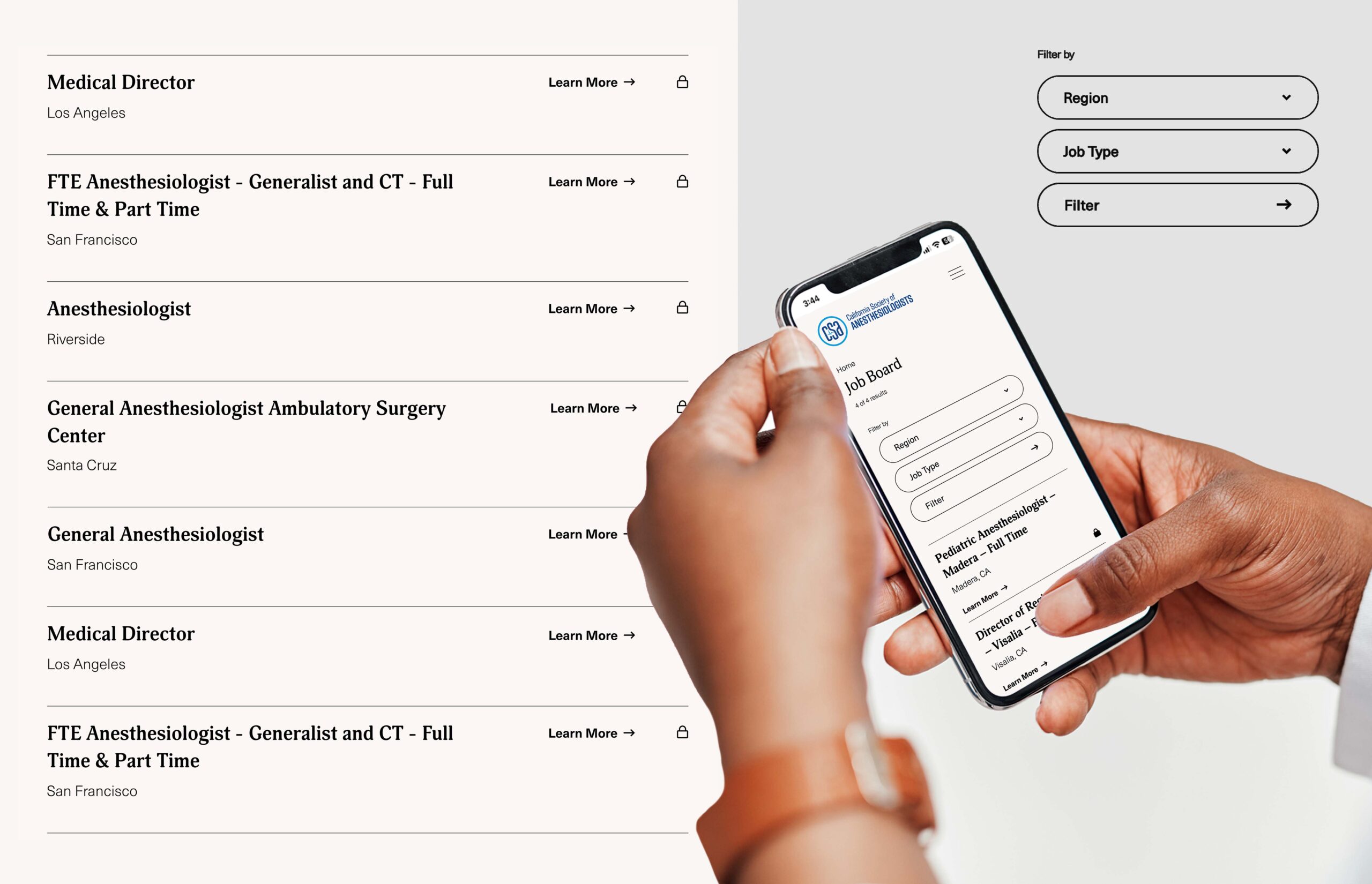
User Experience is Your Website’s Differentiator
A good CMS will supply the right technical tools to generate an impact on your organization. But the greatest difference-maker comes down to how that technology is applied to create an intuitive and engaging user experience.
How you strategize your association website’s design, content, and navigation makes up its user experience. Much like your organization’s brand, a strong user experience communicates to members who you are and what you offer.
Your CMS is important, but it’s invisible to your users. Think of the user experience as the gateway to how your members will access your website’s functionality. Everything on the front end of your website (what your members see and experience in their browser) should be designed to guide users toward the resources they need. If members can’t find or understand what your organization offers, then all that impressive technology is useless.
You can have the best CMS in the world, but your website will still be ineffective if the user experience and interface don’t resonate with your users and serve their needs.

Member-Driven Organizations Need a Design-First Website Approach
Associations have specific needs when it comes to creating a positive member experience, and each website should incorporate certain elements to be effective.
However, you must ensure that your agency partner has the right experience level in all the areas your website requires. For example, a marketing or PR-focused agency may understand how to develop a clear messaging strategy for your website, but they may lack the design and user experience expertise to create a website that resonates with your members.
An organization may also take the wrong path by focusing solely on its website’s CMS and backend technology. A tech-first or SaaS-oriented company may specialize in creating functionality for association websites. However, skills in development and databases can’t compensate for lacking marketing and design skills essential to creating an engaging user experience. When you prioritize technology, you often end up with a cookie-cutter website that doesn’t adequately reflect your organization.
Ultimately, your organization needs a design-first agency with strong development skills that are informed by years of association experience and marketing expertise.
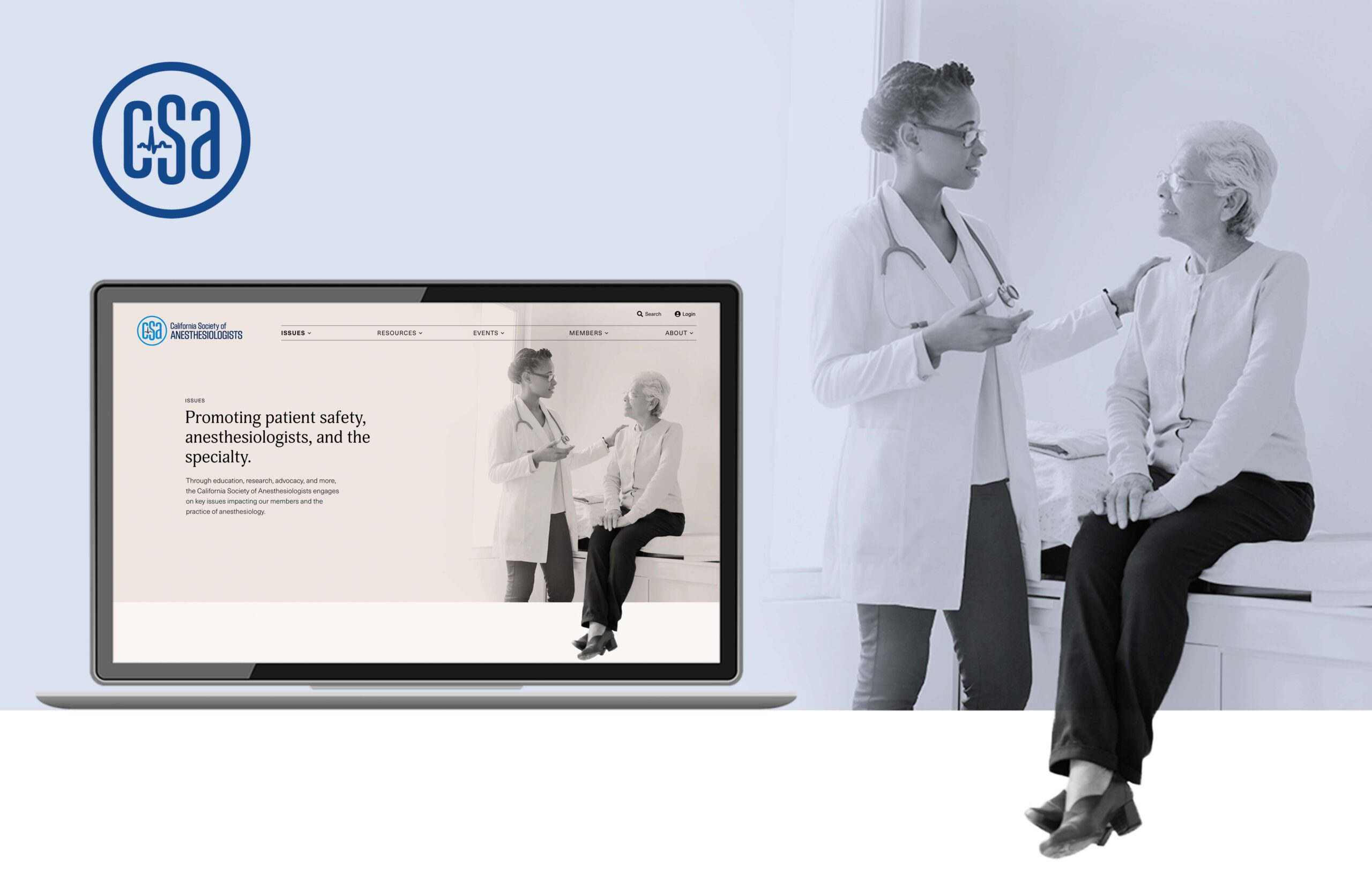
How to Find the Right Web Design Agency for Your Organization
For many associations, the RFP process is the first step toward finding an agency partner for a redesign. Unfortunately, RFPs typically lead to finding one-size-fits-all solutions that won’t address your organization’s real problems.
You need an agency partner that will design a user experience specific to your organization and its members. You should present the objectives for your project and evaluate how well an agency communicates with your team and demonstrates that their experience aligns with your needs.
Have they solved similar problems for associations like yours? Are the services and resources on the websites they produced organized in an intuitive way? Do their designs tell a cohesive and compelling story about the organizations they serve? Good design ensures a website works seamlessly.
When you’re working with the right agency, you don’t need to start with technology questions. Any qualified candidate should offer a strong, stable CMS. What matters most is finding a partner who will expertly plan and design the website to cater to your members. Ensuring your members will find what they need in a way that also communicates what’s unique about your organization.Does this sound like a website to carry your organization into the future? If so, we should talk.

